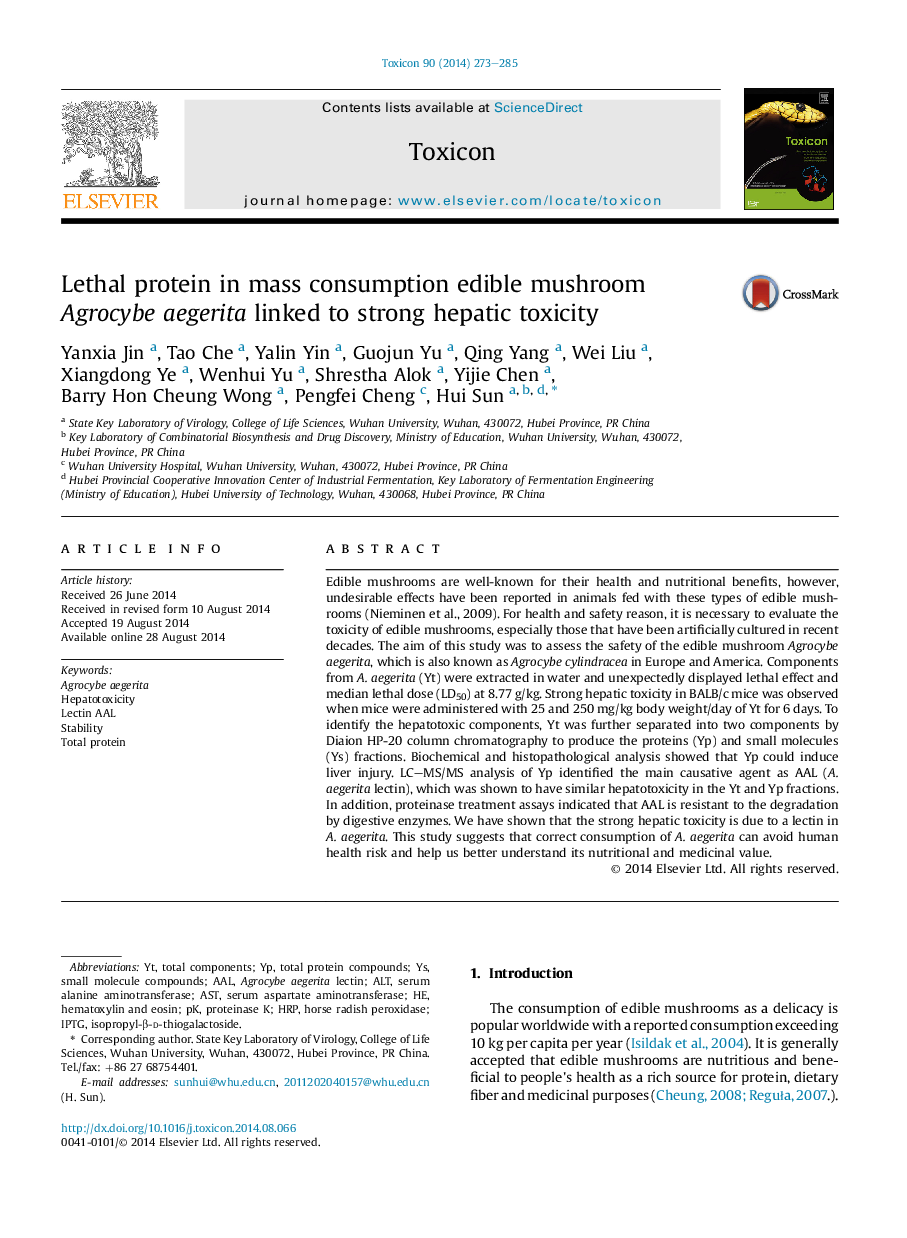| Article ID | Journal | Published Year | Pages | File Type |
|---|---|---|---|---|
| 8396206 | Toxicon | 2014 | 13 Pages |
Abstract
Edible mushrooms are well-known for their health and nutritional benefits, however, undesirable effects have been reported in animals fed with these types of edible mushrooms (Nieminen et al., 2009). For health and safety reason, it is necessary to evaluate the toxicity of edible mushrooms, especially those that have been artificially cultured in recent decades. The aim of this study was to assess the safety of the edible mushroom Agrocybe aegerita, which is also known as Agrocybe cylindracea in Europe and America. Components from A. aegerita (Yt) were extracted in water and unexpectedly displayed lethal effect and median lethal dose (LD50) at 8.77 g/kg. Strong hepatic toxicity in BALB/c mice was observed when mice were administered with 25 and 250 mg/kg body weight/day of Yt for 6 days. To identify the hepatotoxic components, Yt was further separated into two components by Diaion HP-20 column chromatography to produce the proteins (Yp) and small molecules (Ys) fractions. Biochemical and histopathological analysis showed that Yp could induce liver injury. LC-MS/MS analysis of Yp identified the main causative agent as AAL (A. aegerita lectin), which was shown to have similar hepatotoxicity in the Yt and Yp fractions. In addition, proteinase treatment assays indicated that AAL is resistant to the degradation by digestive enzymes. We have shown that the strong hepatic toxicity is due to a lectin in A. aegerita. This study suggests that correct consumption of A. aegerita can avoid human health risk and help us better understand its nutritional and medicinal value.
Keywords
Related Topics
Life Sciences
Biochemistry, Genetics and Molecular Biology
Biochemistry, Genetics and Molecular Biology (General)
Authors
Yanxia Jin, Tao Che, Yalin Yin, Guojun Yu, Qing Yang, Wei Liu, Xiangdong Ye, Wenhui Yu, Shrestha Alok, Yijie Chen, Barry Hon Cheung Wong, Pengfei Cheng, Hui Sun,
